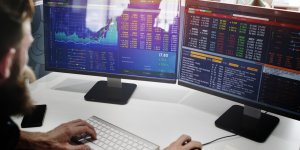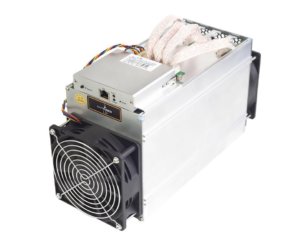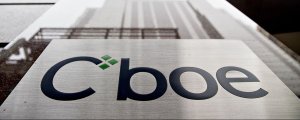Trader who triggered $500 billion crash by spoofing on CME to gain £27 million from suburban semi to be extradited to US
Hounslow, West London. Non-descript, anodyne, beige suburbia…. and the home of one of the largest spoofing incidents ever to have blighted Chicago’s highly sophisticated institutional electronic exchanges. In April last year, Navinder Singh Sarao stood accused by US prosecutors of triggering a £500 billion stock market crash by using computer programs to create fake transactions on […]

Hounslow, West London. Non-descript, anodyne, beige suburbia…. and the home of one of the largest spoofing incidents ever to have blighted Chicago’s highly sophisticated institutional electronic exchanges.
In April last year, Navinder Singh Sarao stood accused by US prosecutors of triggering a £500 billion stock market crash by using computer programs to create fake transactions on an exchange operated by CME Group Inc (NASDAQ:CME) in Chicago, making £27 million gains in the process, all from within this house.
The transactions were made, according to the prosecution, at Mr. Sarao’s home which is directly opposite his parents’ equally innocuous home, where Nav Sarao Futures was registered.
His activities went unnoticed by U.S. investors and regulators, who spent months investigating the mystery crash and eventually concluded that it was down to market conditions at the time.
Since then, investigations continued and led to Mr. Sarao, who prosecutors in North America allege to have played a major role in the plunge by using tactics known as ‘layering’ and ‘spoofing’ on the day of the May 2010 crash.
Today, a judge has ruled that Mr. Singh Sarao, who has gained the somewhat dubious accolade of being the “Hound of Hounslow”, can be extradited to the US to face trial for the alleged layering and spoofing strategies, both illegal in the United States, that he employed in order to gain £28.3 million in profits.
Use of these particular techniques on the afternoon of May 6, 2010 caused the Dow Jones Industrial Average to fall sharply by several hundred points in a matter of minutes, before recovering almost immediately. Mr. Singh Sarao is accused of making a $900,000 profit the day of the flash crash.
In total Sarao made around $40m (£28.3m) from trades by spoofing and layering over a five year period between 2009 and 2014. He was arrested at his parents home in Hounslow in April last year where he traded from his bedroom, promoting some to speculate on whether a one-man-band operating out of a bedroom could spark a crash of such magnitude.
Due to Mr. Singh Sarao’s close proximity to the Equinix LD4 data center which is only 14 km (approximately 9 miles) west of Hounslow in Slough, that particular data center being one of the most used data centers in global electronic trading, it could potentially be assumed that Mr. Singh Sarao had a latency advantage over Chicago-based CME Group due to the distance between Chicago and Slough compared to the distance between Hounslow and Slough. This has since been studied and debunked, therefore putting Mr. Singh Sarao in the full sights of the long arm of the law in the United States.

Mr. Singh Sarao intends to appeal the verdict that approved his extradition, and has been released on bail.
The US Secretary of State must now make an order for the extradition of Mr. Singh Sarao to the Home Office in London within the next two months, and Mr. Singh Sarao will then have 14 days to appeal the request at the High Court in London following the order from the US.
One technicality worth bearing in mind is that spoofing was outlawed in the United States in 2010, a year after Mr. Singh Sarao allegedly began to apply the technique, however the actual application of the law occurred in November 2015, a long time after Mr. Singh Sarao ceased to trade using the technique.
Andrew Katzen, Partner at law firm Hickman and Rose stated publicly today “This goes some way to explaining why the usually hawkish US authorities were so slow to act. It took them five years to bring any kind of formal sanction against Sarao, who was happily trading up until as recently as 2014. Small wonder that he is widely thought to be scapegoat.”
During the court case, Mr. Singh Sarao’s lawyers have stated that spoofing is not an offence in Britain, therefore as he conducted it from Britain, he should not be extradited to the US, however the actual trades were executed on a US exchange, therefore the legal wrangling is likely to continue – perhaps another good example of the reasons for the drive toward global regulation that allows for cross border standardization.
Authorities in North America claim that Mr. Singh Sarao used customised software to place large numbers of sell orders with no intention on following through on them before quickly cancelling them. The authorities alleged that, by doing so, Sarao was able to take advantage of artificially lowered prices.
In his report Judge Purdy said the court had found as many as 99 per cent of contracts on the CME are routinely cancelled by traders and that “altering contracts is commonplace.”
Next time you drive to Heathrow Airport and are disheartened by the array of beige, 1950s semi-detached houses adorning the Great West Road, instead of viewing it as a dour image of post-war suburban architectural brutality, perhaps it should be viewed as the epicenter of leading edge, or indeed over-the-edge trading techniques.









